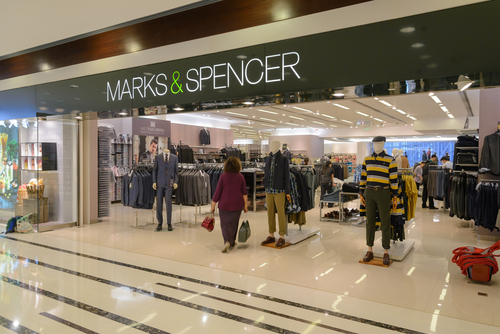Marks and Spencer’s ‘everywoman’ exposed as a high street myth
News just in: the “everywoman” who has long patronised Marks & Spencer’s fashion department does not exist.
She never has, of course, even if, two decades ago, it was easy for the retailer to behave as though she did. Back then, high street offerings were so limited that big retailers could produce broad-brush designs conceived to appeal to the masses. The world has long since moved on.
We live in an age of individuality. Women of all ages expect to express themselves through their clothes. The myth that a woman turns 40 and immediately reaches for a beige waterfall cardigan has been debunked. The high street is now full of brands that serve older women with a clear point of difference. Many of them offer sleek, Scandi-influenced minimalism, as at Cos, or Hush, and Kin at John Lewis.
On the M&S website there is no such clarity, although there are standout pieces. The retailer’s highlights have always appealed to the fashion pack (this is where the front row gets its cashmere jumpers) and a chic, putty-coloured duster coat (£69), oversized denim jacket (£49.50) and suede mule sandals in modish primary colours (£25) would earn a style tick. But there is much else besides. Sometimes comfort is prioritised over aesthetics (as with a selection of spongy-soled trainers). At other times items feel over-designed, as in the case of an orange Bardot top with a ruched, elasticated neckline and pink-patterned, frilly hemmed three-quarter-length sleeves.
Taken together, it lacks a point of view. This is a problem in today’s crowded, challenging market. Retailers not only need to cut through increased competition but face a shift in attitudes around consumption, with owning “stuff” no longer deemed the height of aspiration and concerns about fashion’s environmental impact hearteningly in vogue.
Ironically, the retailer benefitting from this situation is Primark, which is on the verge of overtaking M&S as Britain’s biggest retailer, according to GlobalData.
Its new report predicts that M&S’s UK clothing market share will fall from from 9.7% in 2008 to 7.6% in 2018, while Primark’s will rise from 4.4% to 7.0%. GlobalData also anticipates that M&S’s plan to close more than 100 stores will hasten Primark’s fight to steal its crown.
Primark is the very definition of that scourge of environmentalists – cheap, fast fashion – and it doesn’t sell online, even in this internet-obsessed moment. But clearly, there are a significant band of shoppers who will still brave the high street as long as the offering is clear and the price is low.
This week, for £26, they could fill a basket with a silver, multi-strapped bikini (£6); a slashed-to-the-navel sequin palette bodysuit (£10); a neon-pink, transparent plastic handbag (£4), plus a dress announcing their membership of the “unicorn squad” (£6). This aesthetic may not be to your taste. It won’t be to everyone’s – and that is the point.

